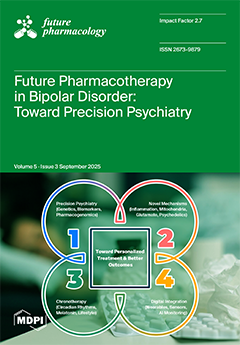Bacterial diseases are a major constraint to aquaculture productivity, driving extensive antibiotic use and raising concerns over antimicrobial resistance, environmental contamination, and food safety. Curcumin, a polyphenolic compound from
Curcuma longa, exhibits broad-spectrum antimicrobial and immunomodulatory activities but is limited by poor
[...] Read more.
Bacterial diseases are a major constraint to aquaculture productivity, driving extensive antibiotic use and raising concerns over antimicrobial resistance, environmental contamination, and food safety. Curcumin, a polyphenolic compound from
Curcuma longa, exhibits broad-spectrum antimicrobial and immunomodulatory activities but is limited by poor water solubility, instability, and low bioavailability. This review was conducted through a literature search of Scopus, PubMed, Web of Science, and Google Scholar using targeted keywords, including curcumin nanoparticles, antibacterial, aquatic pathogens, nanotechnology, synthesis, and disease control. Titles and abstracts were screened for relevance, followed by full-text evaluation of selected studies. Key findings were critically analyzed and incorporated into the review. Findings from the literature indicate that curcumin nanoparticles, synthesized via milling, anti-solvent precipitation, ionic gelation, emulsification, spray drying, and metal/polymer nanocomposite formation, exhibit enhanced antibacterial activity against aquatic pathogens, including
Aeromonas hydrophila,
Vibrio parahaemolyticus,
Escherichia coli, and
Staphylococcus aureus. Optimally engineered curcumin nanoparticles (<100 nm, being mostly spherical, highly negatively charged) can penetrate bacterial membranes, disrupt biofilms, lower minimum inhibitory concentrations, and improve in vivo fish survival. Practical applications include dietary supplementation to boost fish immunity and growth, water disinfection to reduce pathogen loads, immersion therapy for external infections, and antimicrobial coatings for aquaculture equipment and surfaces, resulting in reduced infections and outbreaks, reduced mortality, improved water quality, and decreased antibiotic dependence. In conclusion, curcumin nanoparticles and curcumin-based nanocomposites present a versatile, eco-friendly approach to sustainable aquaculture disease management. However, further field-scale validation, safety assessment, and cost-effective production methods are necessary to enable commercial adoption.
Full article




